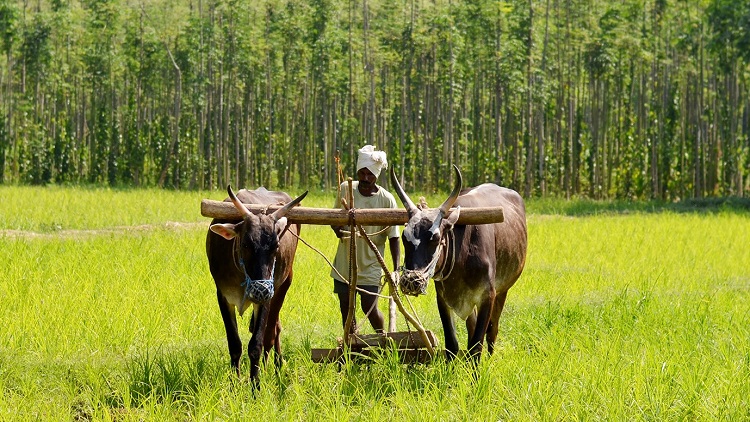
 Sushma Ramachandran
Sushma Ramachandran
The budget proposals for 2021-22 seem to be the need of the hour. Even though examining the fine print now reveals several shortcomings, it still remains a welcome departure from the past in many ways. First, it has a clear focus on stimulating investment and bringing about higher government expenditure.
Second, it has not done any of the usual tinkering with taxes and instead broadly retained the existing tax structure. The much anticipated and dreaded COVID tax was not actually levied, a significant factor behind the buoyancy in the stock markets. Thirdly, doles have not been handed out to any segment of the economy.
And finally, a whopping allocation has been made for the usually forgotten area of drinking water and sanitation.
There are many other noteworthy facets of the budget including multiple reforms that have quietly been ushered in and these are the elements that stand out as being vastly different from the past.
No Direct Cash Transfers
On the negative side, however, the Finance Minister did not seize the opportunity to make direct cash transfers into bank accounts of the poorest of the poor through the well organised digital banking systems. A plea to take this route has been made by many economists and observers ever since the lockdown in March.
According to government officials, similar policies followed in other countries have not met with much success. The deposited funds have not been utilized and thus the aim of raising consumption did not get achieved, while a substantial amount had to be spent.
However, this may not have been so here, as lakhs have lost their livelihoods during the pandemic and are facing uncertain futures. Besides, this would have been an immediate support measure while other policy steps are likely to have medium term or long-term outcomes.
Push for Infra
The most striking aspects of the budget proposals, however, are the hike in spending on infrastructure and the expansion of investments on health and well-being. Infrastructure spending will give the push in 2021-22 that is needed to achieve the target of 11.5 per cent growth. There is now controversy over the 34.5 per cent increase in capital expenditure for the next fiscal, as some commentators are arguing that the numbers may not be as high as envisaged, given the inclusion of the Food Corporation of India’s entire subsidy in the budget unlike in the past.
On the other hand, there are those who insist that the high level of spending is too profligate and the widening fiscal deficit needs to be controlled now rather than later. There is no doubt, however, that the increased spending especially on projects identified under the National Infrastructure Pipeline are bound to give an impetus to employment which is sorely needed right now.
Health and well-being
As far as health is concerned, the enormous hike in outlay, estimated at 137 per cent was expected to some extent. But it was not expected that a big part of the increase would be for provision of potable drinking water as the sector is now under the heading of “health and well-being”. While this may not be conventionally considered as an element of the health sector, it is in fact squarely in the category of preventive health. There is no telling how many diseases could be prevented simply by providing potable drinking water to the masses.
The actual outlay on the health ministry is estimated to rise by only ten per cent as another big chunk of the increase is due to a Rs. 35,000 crore allocation for COVID vaccinations. Even though the expenditure on conventional health areas is not as large as originally envisaged, it is a relief that this sector has been given recognition.
An upgrade in funding also needs to be matched by state governments as ultimately health is a state subject. State government continue to neglect healthcare as till now it has simply not been a major political issue and is invariably side-lined till a medical tragedy hits the headlines.
Reforms continue
The budget proposals have also brought in several long-awaited economic reforms in the area of banking, insurance and public sector privatization. In the banking arena, the proposal to set up an asset reconstruction and management company for stressed assets or what is termed as a bad bank, is a long-awaited idea that has finally come to fruition.
The setting up of a new development finance institution must also be welcomed even though the earlier ones had to be wound up and there is thus some scepticism over the fate of this new venture. And finally, the move to privatise two public sector banks and one insurance company gives an indication that this may be the beginning of selling off a section of the public sector banking system. In this context, the decision to raise the foreign investment limit in insurance from 49 to 74 per cent is timely and was eagerly awaited for years.
As for privatisation, the budget proposals set an ambitious target of raising Rs. 1.75 crore through this route. The difficulty here is that several such targets have been set and failed to be achieved over the past few years. In addition, there is a roadmap for monetization of public sector assets, another area that has been discussed but not implemented for quite some time. In both these areas, the government will really have to bite the bullet to ensure it continues to have credibility on these issues.
Agriculture Infra Cess
The budget proposals did not forget the farm sector with the only significant new tax being a cess meant to create an agriculture infrastructure and development fund. The Rs. one lakh crore fund is meant for upgrading development of mandis, one of the issues that has been highlighted by northern region farmers during the ongoing protests. The fear that the mandi system will be abolished along with the minimum support price mechanism has been at the heart of the farmers’ protests but so far there has been little positive reaction to this initiative.
In conclusion, it has to be said that the very wide fiscal deficit of 9.5 per cent for 2020-21 and the target of 6.8 per cent for 2021-22, are in line with the needs of the economy after the extreme crisis of the pandemic. This may not have been the best ever budget, but it is truly a budget designed for the COVID era.
